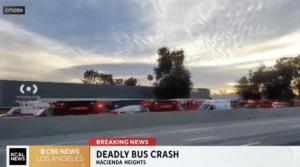 This article was written by Chris Dolan and published by The San Francisco Examiner. Click here to read more of Chris Dolan’s weekly articles at SFExaminer.com.
This article was written by Chris Dolan and published by The San Francisco Examiner. Click here to read more of Chris Dolan’s weekly articles at SFExaminer.com.
As the Giant’s open the season at ATT park with their first homestand I am again asked the question “If someone gets hit with a bat or ball in the stands who is responsible legally?”
This issue was addressed by The California Supreme Court, in 1935, in the case of Quinn v. Recreation Park Ass’n,, where the court held that it has been generally held that one of the natural risks assumed by spectators attending professional games is that of being struck by batted or thrown balls; that the management is not required, nor does it undertake to insure patrons against injury from such source. All that is required is the exercise of ordinary care to protect patrons against such injuries and, in doing so, the management is not obliged to screen all seats, because, as pointed out by the decisions, many patrons prefer to sit where their view is not obscured by a screen.
Moreover, the management is not required to provide screened seats for all who may apply for them. The duty imposed by law is performed when screened seats are provided for as many as may be reasonably expected to call for them on any ordinary occasion and if a spectator chooses to occupy an unscreened seat, or, as, is unable to secure a screened seat and consequently occupies one that is not protected, she/he assumes the risk of being struck by thrown or batted balls; and, if injured thereby, is precluded from recovering damages therefor.”
In Ratcliff v. San Diego Baseball Club of Pacific Coast League (1938), it was stated that it is well settled that one who voluntarily occupies a seat outside of the protected area assumes the natural and well-known risk of being struck by thrown or batted balls. It seems also to be generally recognized that a duty rests upon the management to reasonably protect that part of the grandstand behind and near the home plate, where the greatest danger from flying balls exists. There is ample evidence that bats rather frequently slip from the hands of batters and that such occurrences are not unusual, although they may not occur in every game.
In Neinstein v Los Angeles Dodgers Inc. (1985), the court held that “the quality of a spectator’s experience in witnessing a baseball game depends on his or her proximity to the field of play and the clarity of the view, not to mention the price of the ticket. As we see it, to permit plaintiff to recover under the circumstances here would force baseball stadium owners to do one of two things: place all spectator areas behind a protective screen thereby reducing the quality of everyone’s view, and since players are often able to reach into the spectator area to catch foul balls, changing the very nature of the game itself; or continue the status quo and increase the price of tickets to cover the cost of compensating injured persons with the attendant result that persons of meager means might be ‘priced out’ of enjoying the great American pastime. To us, neither alternative is acceptable. In our opinion it is not the role of the courts to effect a wholesale remodeling of a revered American institution through application of the tort law.”
Interestingly enough, in contrast to the rules above, the courts have held that a franchise may be held liable for injury caused by their mascot causing a distraction resulting in a patron being hit by a fly ball. (Lowe v. California League of Prof. Baseball, (1997).
So, no one is liable for a bat that inadvertently gets lose if the park owners have provided some areas of protected seating and have adequately screened the areas most likely to be at risk of flying balls and bats. So, put down your cell phone and pay attention to the game! Play Ball!










